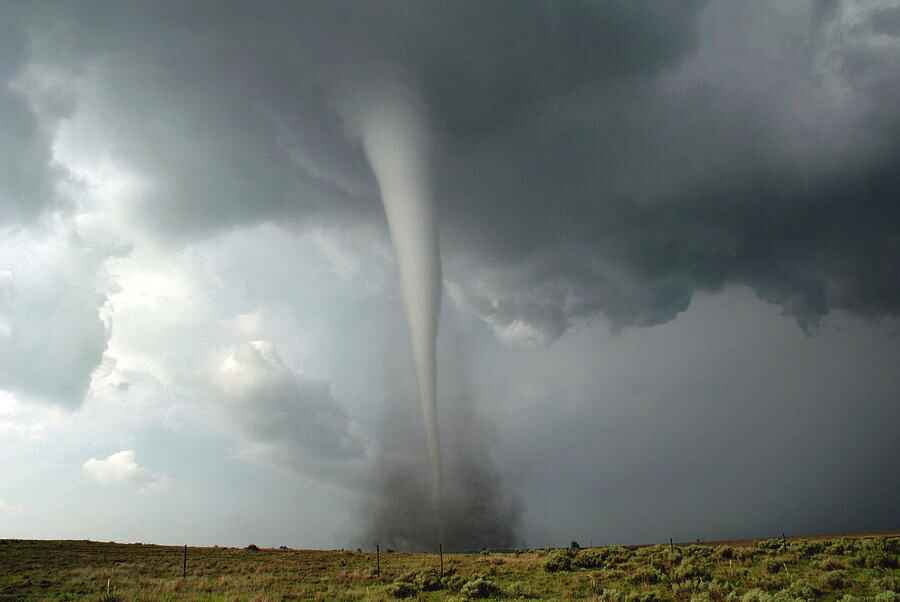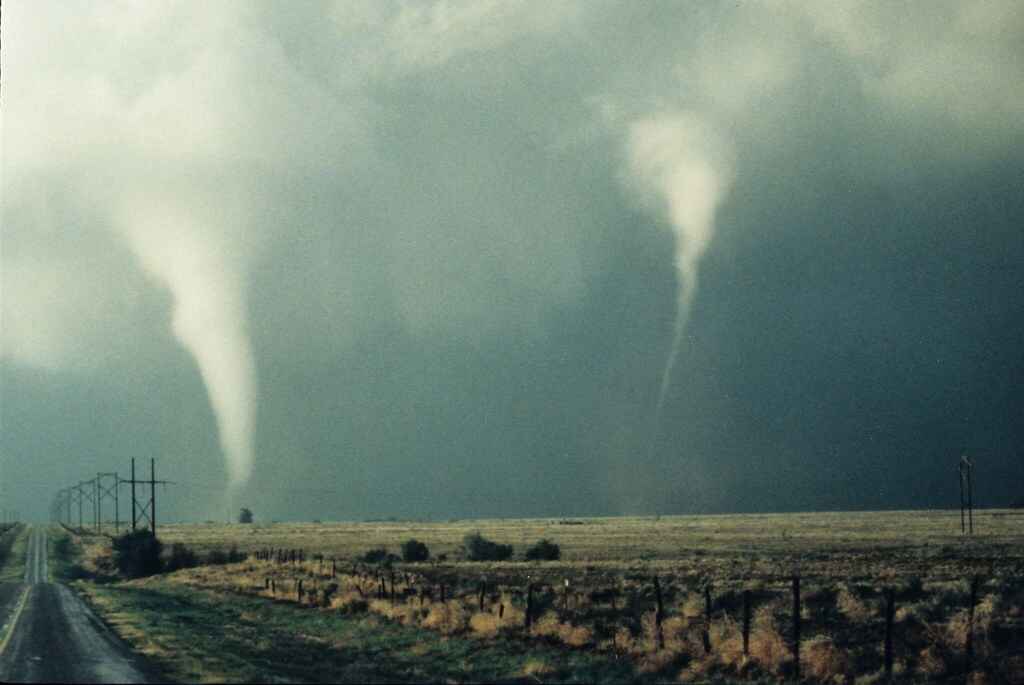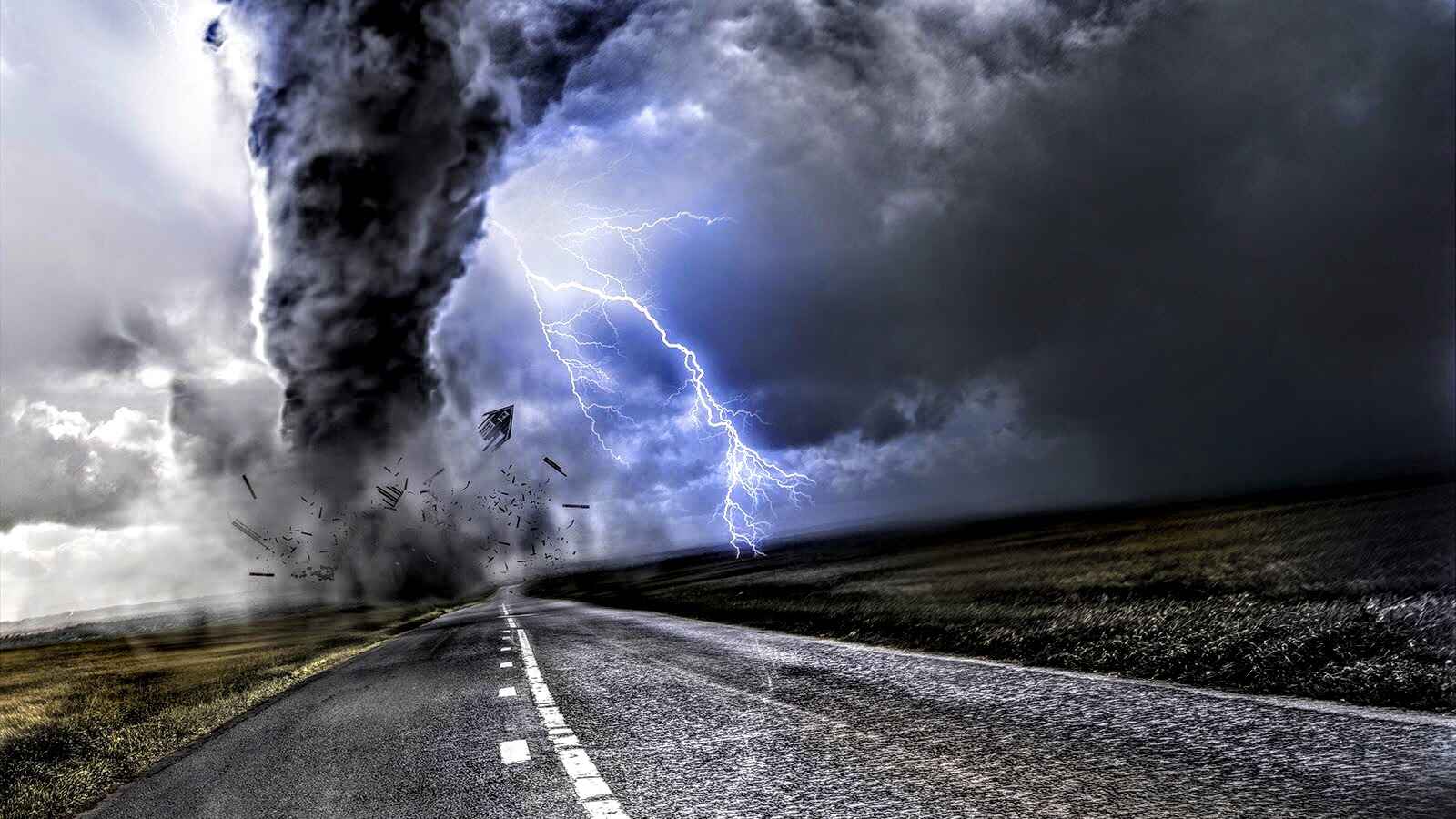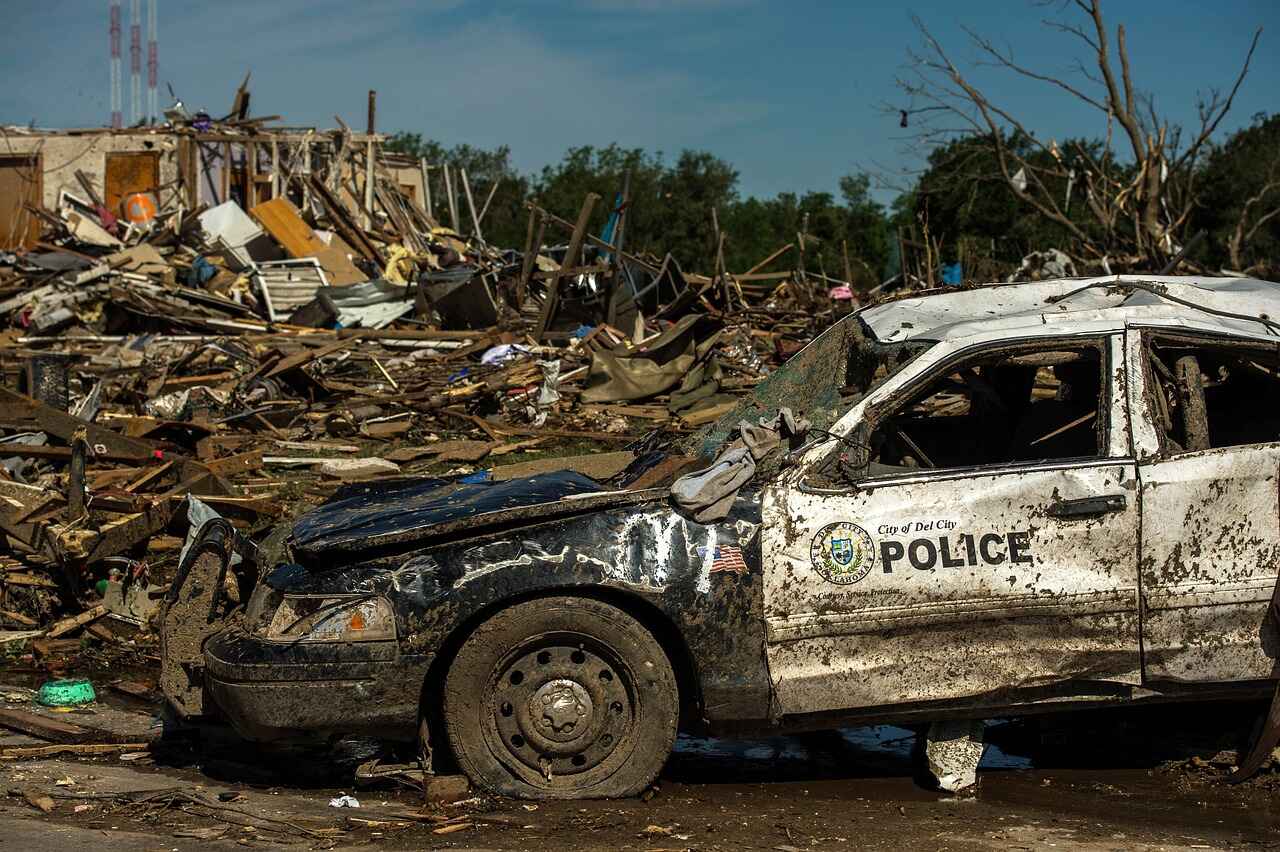Introduction – How Does a Tornado Form?
What Causes a Tornado? Tornadoes, also known as cyclones, are natural forces that can lead to massive destruction within an instance. With winds moving at speeds of about three hundred miles per hour and paths of damage more than a mile wide and fifty miles long, tornadoes pose serious threats to life and property.
This article will outline the environmental conditions that support the emergence of tornadoes, discuss their birth process and analyze the factors determining their size and shape.
Tornadoes are one of nature’s most powerful wonders. Knowing how tornadoes form is vital for predicting and preparing for this destructive force. In this ultimate guide we will look into what causes tornadoes to form with focus on what it takes for a tornado to develop; role of thunderstorms; how they develop step by step; what determines their strength; effects of environmental surroundings on formation; how different geographical areas foster tornado formation ;the scientific basis behind warnings and forecasts ; safety procedures during twister development ;and finally, why it is important to understand these weather events.
The britannica readers will therefore have an in depth understanding on how this complex process leads to a tornado outbreak and measures that should be put in place against such natural phenomena.
What is a Tornado?
A tornado is a violent rotating column of air extending from a thunderstorm cloud down to ground level. It is an extremely intense catastrophic storm capable of causing great damage. Though they come in various sizes, shapes, and intensities but typically appear as funnel clouds.
Tornadoes can reach wind speeds up to 318 mph (512 kph) covering several miles damaging the earth surface while wiping away houses or buildings. During storms like these National Weather Service says never be caught inside your car but get into shelter preferably window less room perhaps basement.
Such severe thundershowers occur frequently in certain regions Only Antarctica has never experienced them since approximately over1000 occurrences reported yearly from the United States.
While most tornadoes are mild and occur in sparsely populated areas, violent ones have struck major metropolitan areas, causing significant loss of life. For instance, the infamous U.S. tristate twister in 1925 ravaged parts of Missouri, Illinois, and Indiana, claiming 695 lives.
Tornadoes can be incredibly frightening, and they often leave a path of destruction in their wake that is difficult to recover from for many years afterward; with loss of life and property being incalculable. Communities should therefore have emergency plans and be ready for any eventuality when it comes to tornadoes.

How Does a Tornado Form – Understanding Tornado Formation
Tornadoes are violent cyclones having a rapidly rotating funnel-shaped cloud. They are one of the most disastrous natural phenomena on earth. Thunderstorms often give rise to tornadoes accompanied by heavy rainfall, lightning as well as hailstones. Knowledge about the processes involved in making these deadly occurrences is very crucial because they help reduce possible impacts on people’s lives.
Formation of tornados involves some complicated atmospheric events. Below are steps that outline how tornados take place:
Energy Release: A downpour or thunderstorm such as hail storm generated by cumulonimbus cloud usually release energy with strong winds blowing from this direction.
Horizontal Air Swirling: Changes in wind direction and intensity at higher altitudes cause the air to swirl horizontally, resulting in the formation of a rotating air column called a mesocyclone.
The interaction between air masses causes a mesocyclone to experience warm rising air as well as downdrafts of cold air that converge forming a funnel cloud.
As soon as the funnel cloud touches the ground, it becomes known as tornado.
See also: Which State Has the Most Tornadoes and Why It Matters
The Key Ingredients for Tornado Formation
Specific atmospheric conditions must align properly in order to create a tornado. The main ingredients required for the creation of twisters are warm and wet surfaces, dry cold airs aloft, and strong vertical wind shear. When these elements combine together, they form an environment favorable to tornado development.
See also: What is a Rain Wrapped Tornado? Severe Weather
How Does a Tornado Form: Additional Conditions for Tornado Formation
While thunderstorms are mainly responsible for affecting creation of tornados there are some other weather situations which might exist simultaneously. These include:
Humidity: Moisture is crucial in creating an intense weather system. Frequently moist sources like Gulf of Mexico provide enough moisture required in the production of tornadoes.
Rise: Lift is needed to force up some parts of atmosphere making vapor turn into little droplets or being denser water clouds. Forces such as cold fronts, drylines, strong sea breezes, changes in terrain elevation and movement of air masses may induce lift.
Unsettled Weather: As hot dense air rises through convection mechanism causing fierce up drafts and down drafts when it cools rapidly down because it is always accompanied by cold dry winds coming downwards. Intense uplifts increase chances for heavy showers or hailstorms that may have flash floods with lightening including twisters.
Wind Shear: Wind shear refers to rapid changes in wind speed and direction over a short distance or time. Vertical wind shear amplifies winds with height; horizontal wind shear controls turning (directional) movements of winds big enough to set off tornadoes. The intensity of the wind shear is one factor that contributes to a tornado.
The Role of Thunderstorms in Tornado Formation
Thunderstorms can form tornadoes. Rotating updrafts in supercell thunderstorms create ideal conditions for tornadoes to develop. Warm, moist air interacts with cold, dry air in the updraft. This makes a good environment for tornado formation.
As the updraft rotates, it tightens into a mesocyclone. The mesocyclone is very important for tornadoes to form. Its creation means all needed conditions have been met. The tightening, intensifying mesocyclone leads to tornadoes touching down and moving across cities.
Intense rotation in the mesocyclone stretches and pulls air upwards. This creates low pressure at the surface. As pressure drops, spinning increases. Warm moisture gets sucked in from surrounding air. As this air strengthens continuously, an ordered column forms, creating a funnel-shaped cloud. Then, the funnel cloud may descend and touch the ground, officially becoming a tornado.

The Step-by-Step Process of Tornado Formation
Tornado intensity can range from weak to extremely powerful and destructive ones. Several factors determine tornado intensity, including size and speed of the rotating updraft; temperature and moisture content of the air; presence of other atmospheric phenomena like downdrafts, rear-flank downdrafts etc.
Factors Influencing Tornado Intensity
Tornado intensity can vary widely, ranging from relatively weak tornadoes to extremely powerful and destructive ones. Several factors influence tornado intensity, including the size and speed of the rotating updraft, the temperature and moisture content of the air, and the presence of other atmospheric phenomena such as downdrafts and rear-flank downdrafts.
The Impact of Environmental Conditions on Tornado Formation
Environmental conditions such as topography or local geography can have significant influences on tornado formations. For example, hills or mountains may be present that could affect airflow thus affecting the development of tornadoes. Understanding how various environmental factors affect this process is vital in predicting areas susceptible to tornadoes.
See also: Green Sky Tornado: Why Does the Sky Turn Green?
Tornado Formation in Different Geographical Regions
Although tornadoes can happen throughout geographical locations globally, they are more prevalent in central United States often referred to as Tornado Alley. Nevertheless, it should not be understood that only this area has such weather conditions since understanding different environmental parameters within distinct regions is key to accurate prediction and preparedness.

Characteristics of Tornadoes
Tornadoes possess many features which define their appearance as well as behavior. Knowing these attributes help in identification and categorization of tornados. Britannica further describes some major characteristics of tornados:
Shape: Typically there are funnel-shaped columns hanging down from parent cloud even though others appear like horizontal rolls beneath a thunderstorm cloud base while others take the form of thin rope-like tubes extending from parent clouds to earth’s surface at places where most are often little developed.
Weak ones may have a cone shape while violent ones usually appear short and wide-cylindrical columns. In their dying moments, tornadoes may look like long tubes of rope.
Size: Tornadoes range from small to huge; size is not necessarily indicative of strength or intensity. The size of a tornado is generally determined by its damage path, which typically extends for one or two miles with the largest severe storms having tracks hundreds of miles long. Tornado widths can range from less than 10 yards to as much as 2 miles across.
Wind Speed: The Enhanced Fujita Scale measures wind speeds in movement intensity scale, EF0 (light damage) to EF5 (incredible damage).
Color: Tornados are colored differently and this mainly depends on the quantities of humid air they contain. Examples are white, dark gray, black, red and green colors that it can take at various points when the sun’s direction changes, there clouds blocking out sunlight totally during a certain time interval but some other factors such as ground cover might also contribute to how these objects appear.
Rotation: Tornadoes will generally twist in one direction only though once again examples are present where this does not hold true. For example counterclockwise spirals are observed in most tornadoes found within North America and clockwise rotation is reported for those found in southern hemisphere due to Earth’s rotation known as Coriolis effect.
Types of Tornadoes
There are two main kinds of tornadoes – those from supercell storms and those not from supercell storms. Each type has sub-groups based on their shape or origin. Supercell tornados come from powerful thunderstorms that can last a long time.
They create very destructive and violent tornados, usually rated EF3 or higher in intensity. Even though these tornados may start out thin, they can grow much wider as they reach the clouds. Stovepipe tornados stay tall and narrow from the cloud to the ground, like a cone shape. Some tornados have more than one funnel of spinning air around a main vortex in the middle. Rain-wrapped tornados are dangerous because heavy rainfall hides them, and they can only be seen on radar.
Meteorologists have to understand how to model different storm types to predict their paths. New technology helps track tornados and warn people. The more we learn about tornados, the better warnings we can give to areas at risk. Meteorologists look for clues about a tornado’s type to guess where it might go next. Knowing how tornados form is key to helping communities get ready for these devastating natural events.
Non-supercell tornados happen about 800 times per year on average. They form from rotating air pockets along the ground, not thunderstorms. One type is gustnadoes, which are brief ground-based spin-ups that carry dust but no condensation funnel. Waterspouts happen over water and can be either fair-weather (weak) or tornadic (like land tornados, but over water).
Their strength doesn’t matter since they are wonders of nature but hazardous. Landspouts have a flat base and fluffy look, or may appear rope-like. They form near the ground in the early stages of a thunderstorm, becoming more distinct as the storm strengthens. They don’t come from rotating updrafts like supercell tornados, but can still be dangerous.
Forecasting and Detection
Atmospheric conditions are monitored by meteorologists for signs of possible tornado formation. The following are two primary alerts issued for warning the public about impending tornados:
Tornado Watch
This means that there is a likelihood of tornadoes forming given prevailing weather conditions hence people should get ready for one, go into hiding and listen out for further updates.
Tornado Warning
If this is given then it indicates either that there has been sighting or a tornado touchdown seems imminent hence quick action must be taken in terms of seeking shelter from the wind driven rain water.
The Science Behind Tornado Warnings and Predictions
There have been significant advancements in meteorological science that have improved our ability to forecast and warn against tornadoes. For instance, Doppler radar gives precise visual data on what causes these whirlwinds allowing accurate forecasts. By issuing timely warnings, lives can be saved especially where communication is good among communities affected by an event such as a hurricane or tornado.
See also: What is a Rain Wrapped Tornado? Severe Weather
Safety Precautions While a Tornado is Forming
Taking appropriate safety measures when a tornado is imminent can save lives. Essential is finding shelter in a sturdy, well-built building, ideally a basement or an interior room on the lowest floor. Moreover, it is necessary to stay informed through weather alerts and obey evacuation orders during this period of tornado formation for security purposes.

A bad year for Tornado Alley… and Alabama
Tornado Alley had a bad year for tornadoes. Texas, Oklahoma, Kansas, and Alabama had many tornadoes. These storms caused much damage. Homes, businesses, and farms were destroyed. Many people lost their homes. The storms also caused power outages. This disrupted water and other services. People felt overwhelmed by the tornadoes. Some had to start over. Alabama was hit very hard. People there suffered a lot. These tornadoes made people very vulnerable. They relied on others for help. It will take time to recover from the tornadoes. But people are working together to rebuild. This brought communities closer. Though the year was difficult, people are healing.
Conclusion
In conclusion the process involved in forming a tornado is complex comprising atmospheric conditions thunderstorm dynamics environmental factors etc., Understanding key ingredients step by step process influencing factors helps individuals and communities prepare for and respond to tornadoes.
Similarly technological advancement has led to meteorological science improvement which has resulted into effective prediction systems keen on warning people against impending dangerous events that may befall them including tornados thus making it paramount to remain vigilant always so that one does not become victimized.
This means finally looking at how we are able to minimize the impact these natural events have caused through studying what causes them.
Tornadoes are intricate and strong weather phenomena; they made up of powerful forces that can cause great damage and endanger human lives. It is crucial to understand how tornadoes tilt and turn, what downdraft characteristics do they have, or how we can detect them for safety reasons.
By examining the environmental conditions necessary for their occurrence as well as exploring different kinds of tornadoes and their features, we will be better placed to comprehend these destructive natural phenomena hence take appropriate steps to curb their intensity. Stay informed, stay safe.

